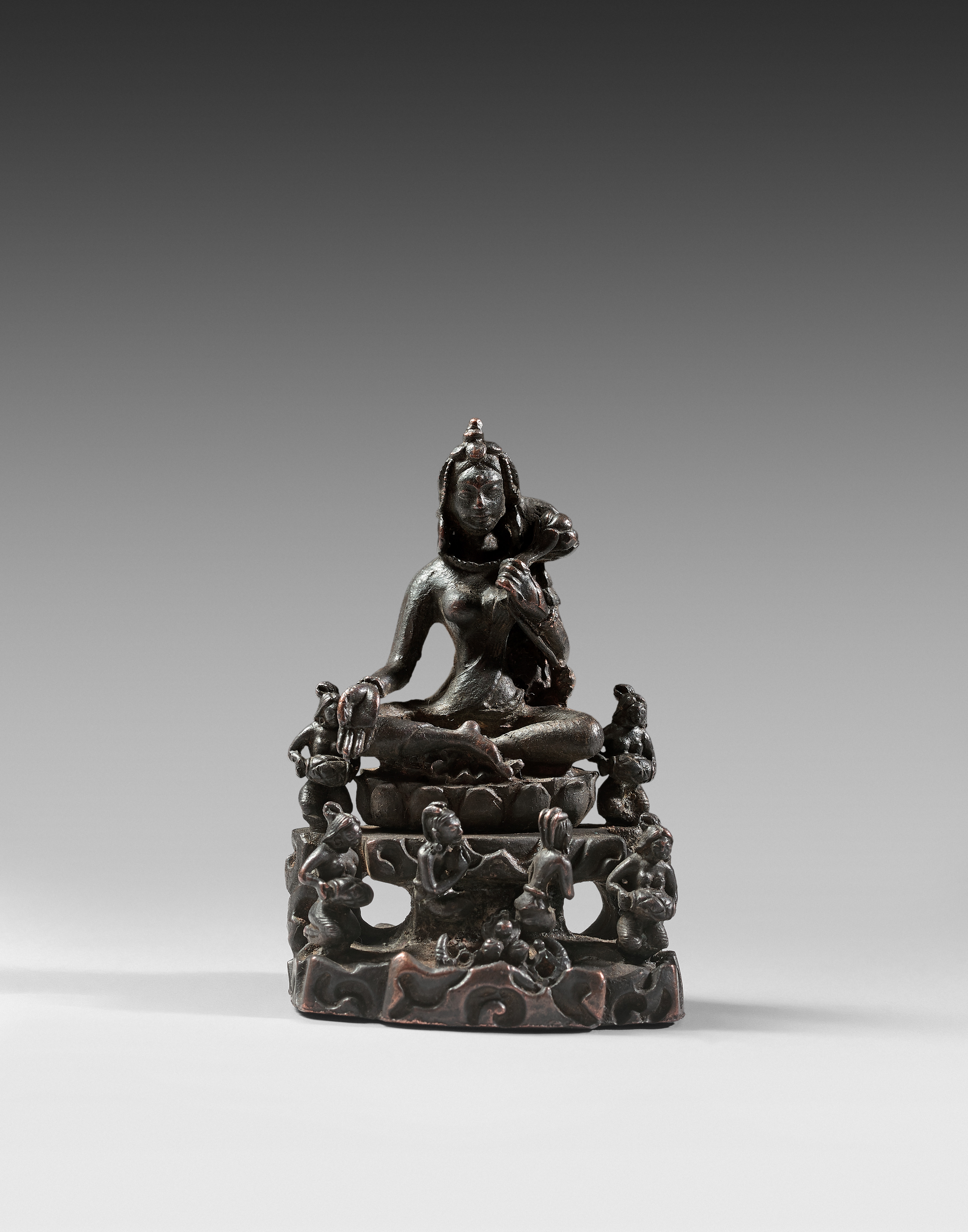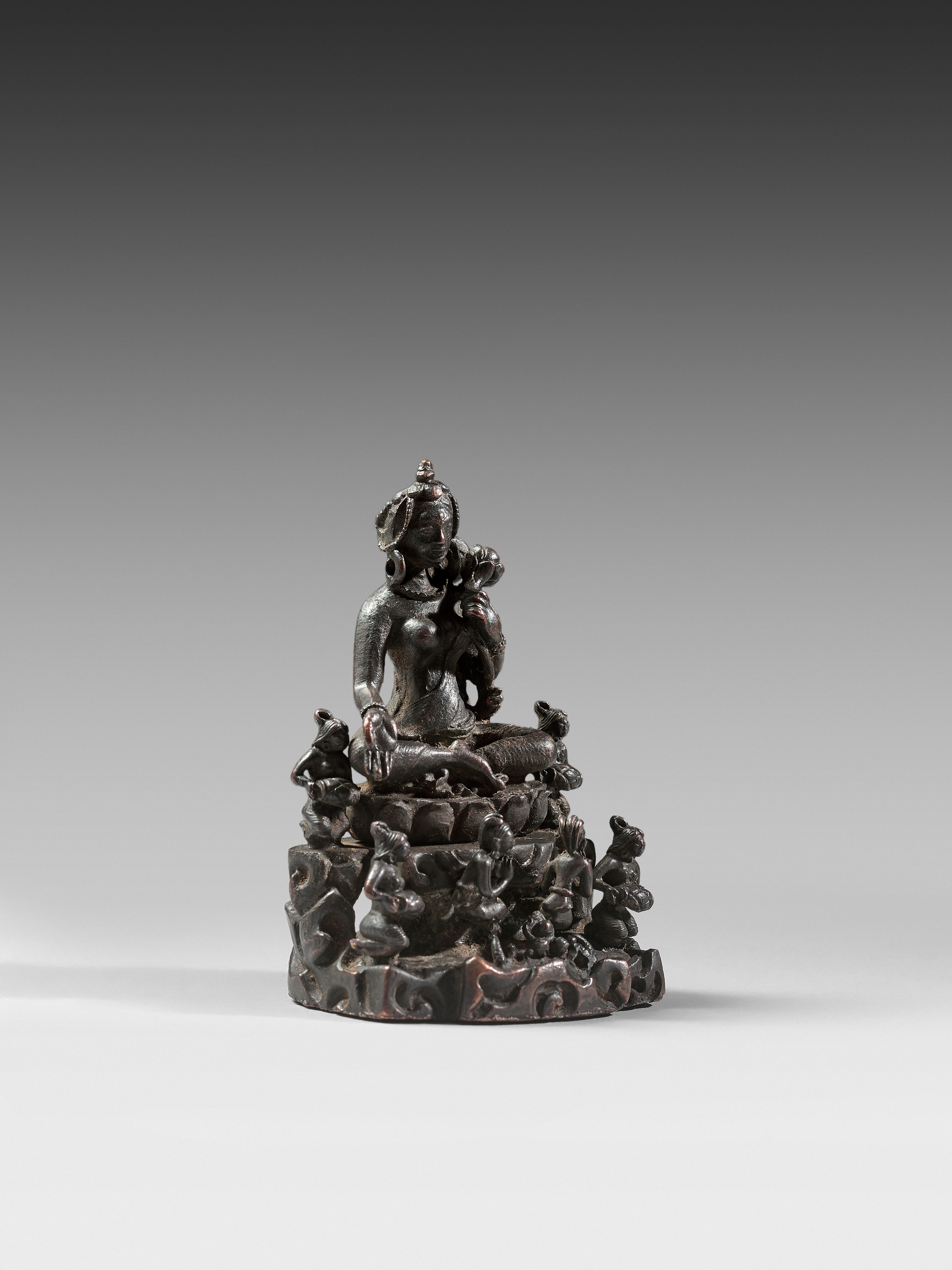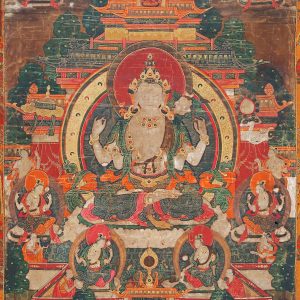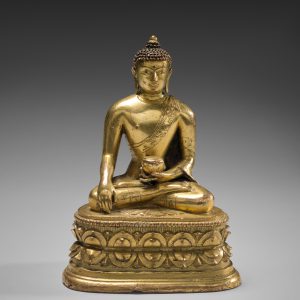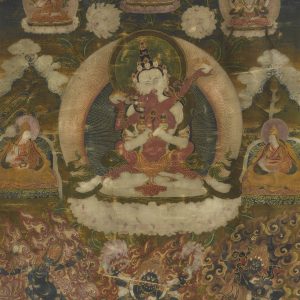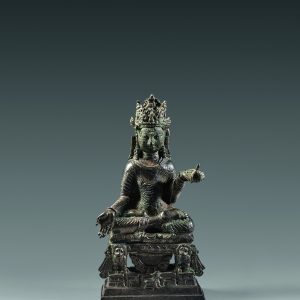The goddess Tārā, in her aspect Vajratārā
14 000,00€
Bronze
Tibet
Mid 17th century
H. 6 cm or 2 ⅜
Description
This Tārā made of bronze, measuring 6 cm high (2 ⅜ in), is to be related to the extraordinary Tibetan artist Chos-dbyings rdo-rje (1604-1674), the 10th Karmapa. Progress in tibetology has made it possible to identify the original and fascinating production of this pontiff.
The statuette represents the goddess Tārā in her Vajra aspect. A particularity of her iconography is the traces of eyes present on the forehead and the palms of the hands. From one hand, she spreads her spiritual favors and from the other she holds the stem of a utpala lotus, skillfully designed. Tārā is considered the female counterpart of the bodhisattva Avalokitésvara and like him, she protects against eight dangers, including fire, water, attacks by wild animals and robbers, and epidemics.
Chos-dbyings rdo-rje creates sculptures in an easily recognizable and very original style. He invents an archaic synthesis from two main ancient styles: the Kaśmīr of the medieval period (8th-14th c.) and the Tang China (618-907), but not only. For example, the sitting position with crossed ankles, which is non-canonical in the art of Vajrayāna, recalls the bodhisattva’s representations of the rock shrines of the Northern Wei period (386-537). The breasts, small and fleshy, with a perfect roundness, are characteristic of his manner. The same is true of the elongated face and the whimsical hairstyle, which is reminiscent of classical India. The lotus throne of the goddess is placed on the top of a pile of rocks populated by musicians and secondary characters, as we can see on several sculptures from Kaśmīr.
The life of Chos-dbyings rdo-rje could be the subject of a novel. He belongs to that exceptional generation of seventeenth-century Tibetan pontiffs with multiple gifts, who could be compared to the personalities of the Western Renaissance. He is a renowned artist, active from the age of eleven, and considered as being as skilled in painting as in sculpture. He lived in exile for thirty years and it was in Li Jiang in what is now Yunnan Province in China that he produced most of his work. Thanks to the pieces preserved locally in the municipal museum, art historians are able to identify his pieces.
Our sculptor made several Tārā comparable in size and quality to ours. Cautiously, most of them are considered to be workshop works, although it is doubtful that the workshop continued to produce sculptures after the pontiff returned to central Tibet to die. They might have surrounded a larger image of the goddess and thus constituted homogeneous canonical groups of twenty-one Tārā.
Provenance: Private collection, USA.

